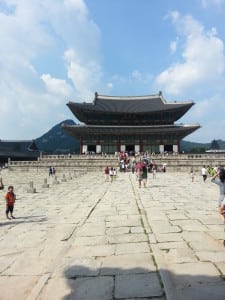 We live in a competitive world. The extent to which a company is able to protect its trade secrets is an important factor in its overall ability to survive and prosper. In the employment context, complicated legal issues arise when a departing employee is in a position to use and/or disclose confidential information to a competitor.
We live in a competitive world. The extent to which a company is able to protect its trade secrets is an important factor in its overall ability to survive and prosper. In the employment context, complicated legal issues arise when a departing employee is in a position to use and/or disclose confidential information to a competitor.
Complicated legal issues also exist when hiring the employee of a competitor. An important step for a company when using risk management procedures is to implement processes to protect trade secrets and confidential information. Also, a company needs to protect itself from unfair competition claims, as well as prevent the raiding of its employees. All are wrapped up in trade secrets.
Understanding What Constitutes a Trade Secret
If trade secrets are important and are protected- what are they?
In Korea, the statute that governs trade secrets is the Unfair Competition Prevention and Trade Secret Protection Act- or the “UCPA”. Article 2 92) of the UCPA defines a trade secret as :
" Business or technical information, including manufacturing method. Selling method or other information useful in the trade, which has an independent economic value and is maintained as a secret through reasonable efforts of its owner”.
In essence to constitute a trade secret in Korea. The courts will look at the following criteria regarding the information:
1. The extent to which the information in question is known outside the business;
2. The extent to which the information is known by employees and others involved in the business;
3. The extent of the measures to safeguard the secrecy of the information;
4. The value of the information to the competitor; and
5. The amount of effort or expense required to develop or compile the information.
The determination of whether information constitutes a trade secret is extremely fact specific, and the courts have reached opposite conclusions on the same types of information depending on the facts presented. Two principal factors create the difference between cases that recognize information as a trade secret and cases that do not. First, courts determine whether the information is truly secret, i.e. not in the public domain or easily accessed. Second, courts determine whether the employer has taken reasonable steps to protect the secrecy of the information.
Therefore, a simple list containing customer’s names, addresses and phone numbers, which are easily ascertainable, are not deemed to be trade secrets. The information must be information that competitor’s would have difficulty in obti9aning such as customer’s preferences, purchase history and contracts information.
Note: To maintain information as a trade secret , a company must take steps to keep information confidential. Therefore, during the exit interview, an employer should remind the employee of his or her confidentiality obligation. This should cover:
The types of confidential information that the employee previously had access to during his/her employment;
Any agreements with the employee regarding confidentiality or competition issues;
The employee's obligation to return any confidential information (make sure you remind employees to return all electronic information stored in all locations, including personal laptops or home computers);
The duties of the employee's new position;
The employee's responsibility not to use or disclose confidential information
Trade Secret Misappropriation
Remember, the biggest threat of trade secret misappropriation, is generated by the movement of employees or ex-employees. The majority of cases in Korea involving trade secret misappropriation is caused by employees who learn of trade secrets in the normal course of their job and then jump ship. Or a potential business partner learns about trade secrets and then copies them. It is unusual in Korea to have trade secrets misappropriated by a third party stealing them. Normally, an employee is involved. Therefore, companies must take precautions when dealing with employees. A properly drafted confidentiality agreement which contains a restrictive covenant can be an effective tool for preventing trade secret disclosure. But what is meant by the term "restrictive covenant?" It can cover a wide array of devices including:
All of these types of restrictive covenants have a potential role to play in an ongoing effort to protect trade secrets. It is advised that to ensure the proper use of restrictive covenants, you conduct an audit of outstanding agreements to check whether appropriate restrictive covenants are properly used.
The risk of trade secret misappropriation while doing business in Korea is real. To learn about ways to manage or mitigate the risk of trade secret misappropriation of other risk of IP infringement, please join me at the KBLA's 2017 risk management seminar- " Managing Risk in Korea" to be held on March 24 at the Hyatt Hotel in Seoul. Visit the following link to register :